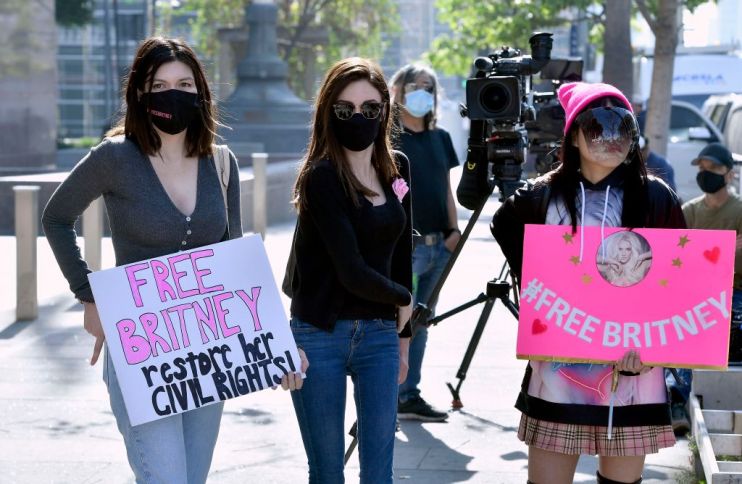Framing Britney Spears: A glimpse of the hell of celebrity

“Choose your own destiny” reads Britney Spears’ t-shirt on a recent Instagram post. You could be forgiven for thinking she did just that. Britney is the working class girl from Kentwood, Louisiana who found fame as a precocious child in the Disney Club before rising to the summit of the pop world with hits including …Baby One More Time and Toxic. As recently as 2019 she was banking $1m a week from the most lucrative residency in Las Vegas history.
But that slogan is one of many exhibits in an ever-growing casefile being compiled by activists who say the pop star is sending coded messages from a virtual imprisonment. What we know for sure is that Britney controls neither her finances nor, even more bafflingly, her own “person”. This means she’s not free to go where she wants, see who she likes, or keep the money she earns.
This legal “conservatorship”, which gives Jamie Spears guardianship over his daughter and her career (a controversial use of a legal ruling usually applied to people suffering from conditions such as dementia), is the crux of the New York Times documentary. But what’s just as striking is the portrait of the system through which Britney rose to fame.
For 75 minutes, we’re given a glimpse of what she faced from an absurdly young age. We see a grey-haired talk show host jokingly flirt with a 10-year-old Spears, in front of a live audience. A teenage Spears is asked at a Q&A whether she’s a virgin.
We hear a female politician say that if given the chance she would shoot Britney for being a bad influence on the nation’s children; when Spears is told about this, she starts to cry. We see lurid magazine headlines, cruel jokes about her divorce and subsequent breakdown, and most of all we see the paparazzi, who followed her everywhere hoping to capitalise on her downfall, which they did, often.
While the New York Times doesn’t reveal anything startlingly new – they were unable to reach Spears herself and her family declined to be involved – the film successfully documents an institutional juggernaut of misogyny and exploitation that shows little sign of slowing.
Made up of both new interviews and archive footage, it’s impossible not to sympathise with Spears, who comes across as relentlessly upbeat in the face of unbearable circumstances.
A minor revelation, at least to me, is the extent to which a group of fanatical activists give up their lives to defend the pop star. Their devotion is reminiscent of the group of internet sleuths who became the stars of Netflix documentary Don’t F**k With Cats, poring over every unredacted legal document, every social media post, looking for a smoking gun. While at first the group, almost exclusively dressed in shades pink, seem a little ridiculous, you warm to them as you start to get behind their cause.
There are also echoes of Asif Kapadia’s Amy Winehouse documentary, showing both the raw talent of their subject, and their inevitable breakdown in the face of a media barrage. Given how bad things got for Spears, peaking when she infamously shaved her head and attacked a paparazzo’s car with an umbrella, it’s a miracle her story didn’t turn out the same way.
Implicit in all of this is the role of the media and the public, who continue to continue to get their kicks from the serialised misery of troubled young people. It’s also a reminder that movements like Me Too have a long way to go, facing an uphill battle against legal and professional institutions that seem at best passive and at worst actively hostile.
